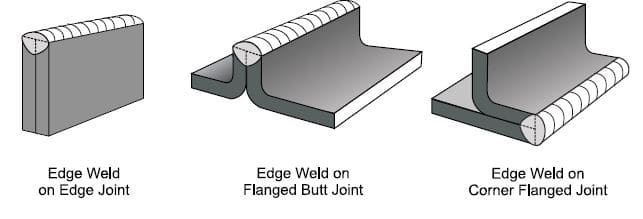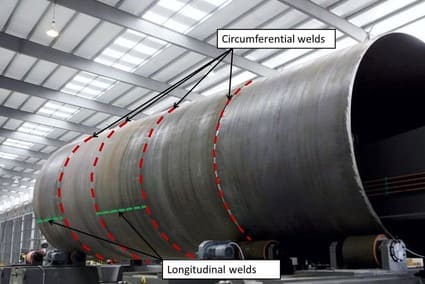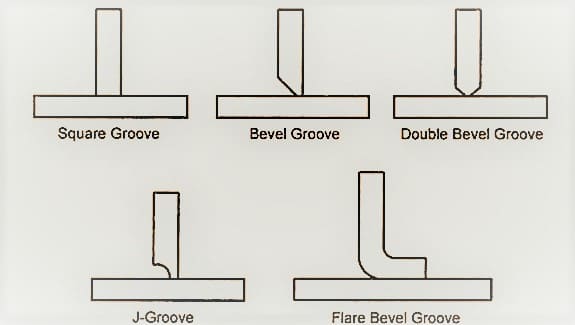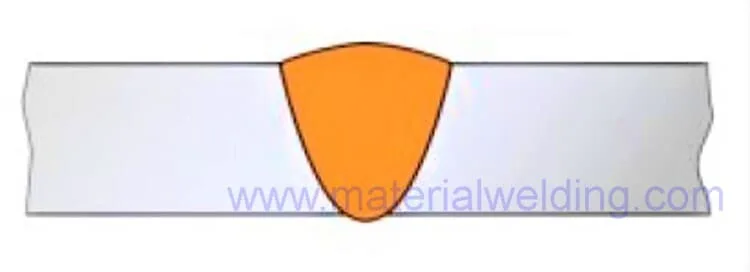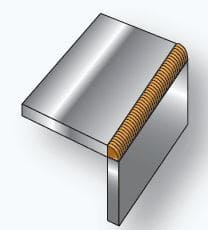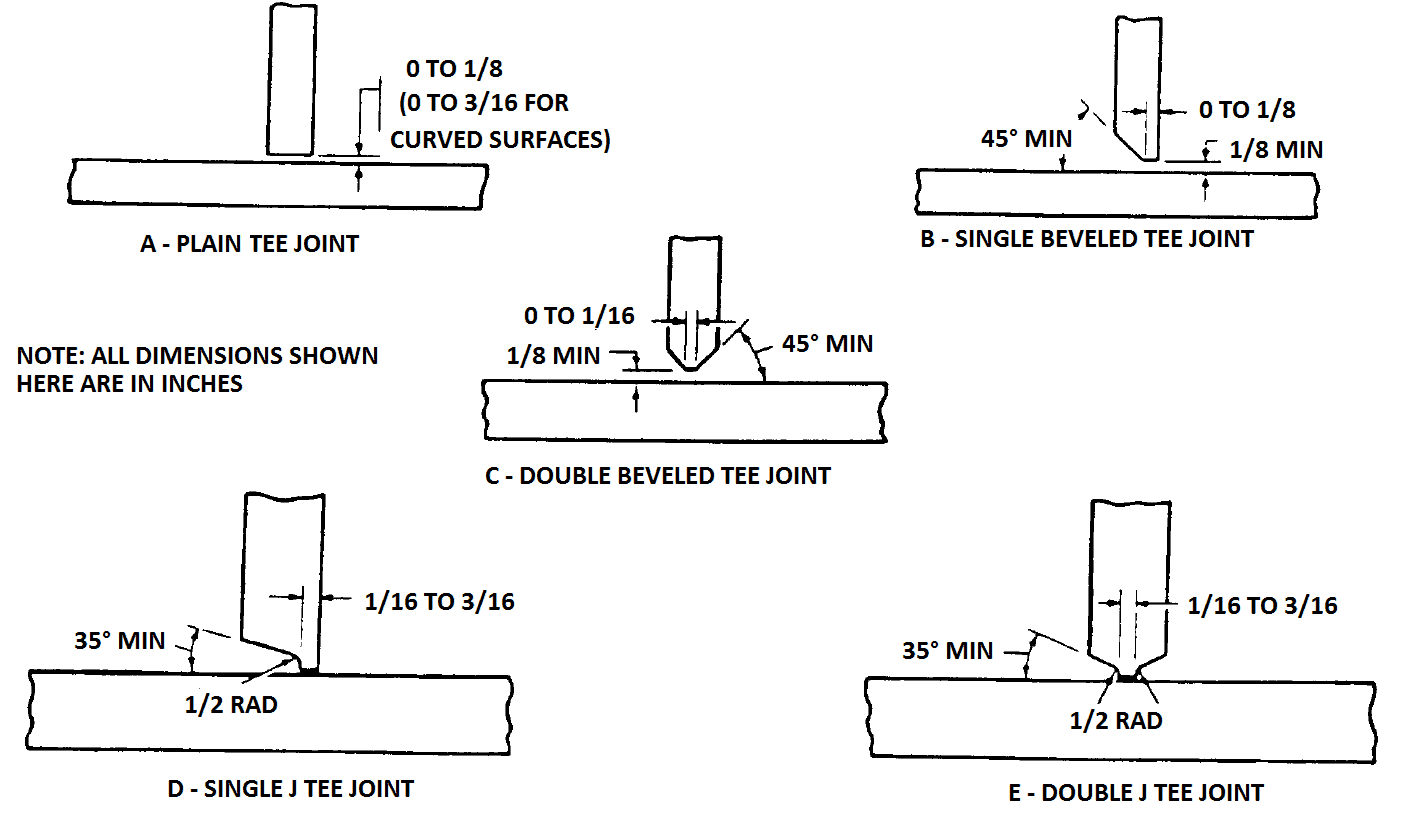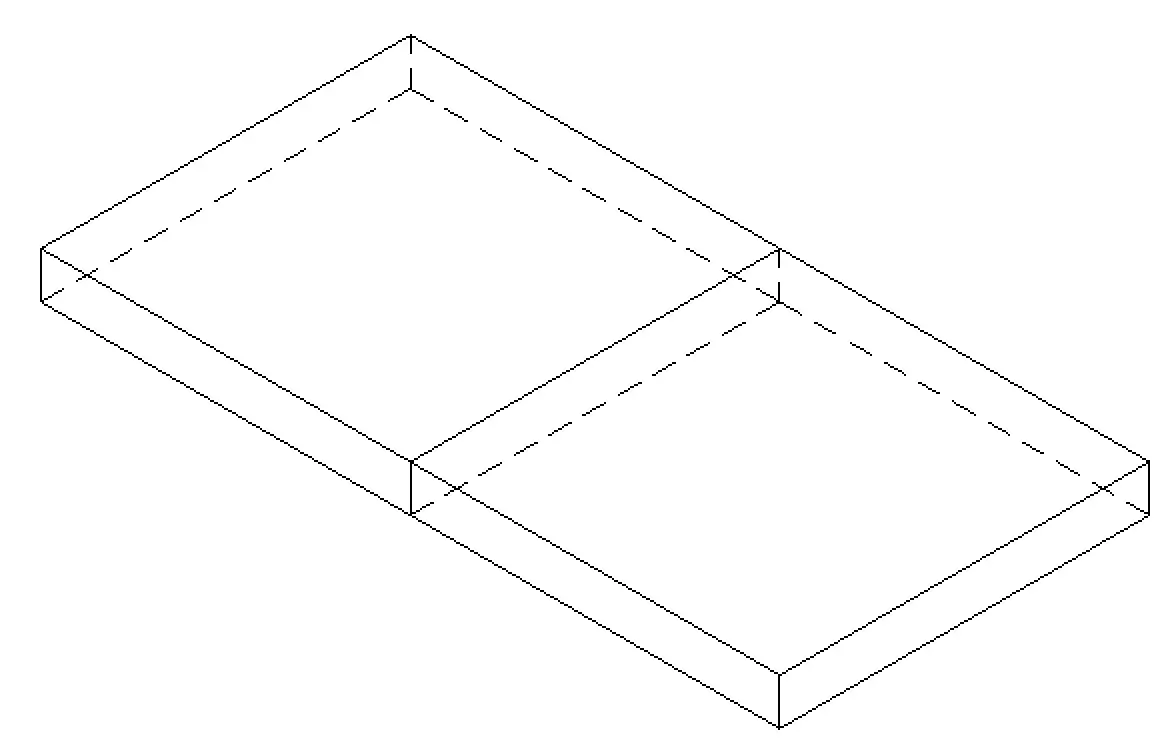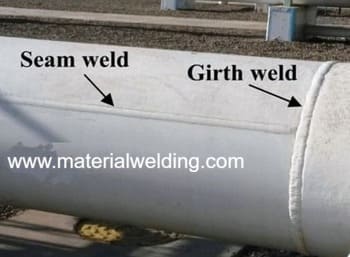Types of joints
There are many different types of welds and joints, each with its own weld joint configuration and specially assigned welding symbol as per AWS A2.4 or ISO 2553.
The most common type of weld is the butt weld, which joins two pieces of metal at their ends. A lap joint weld joins two pieces of metal that overlap each other, while a T-joint weld joins two pieces of metal at right angles to each other.
Other types of welds include the corner weld, the edge weld, and the slot weld. Each type of weld has its own specific symbol that is used to indicate how the parts should be positioned during welding.
Types of Welding Joint
There are various types of weld joints with varied weld joint configurations, each with its own welding symbols. The most common are:
- Butt Joint
- T-Joint
- Lap Joint
- Corner Joint
- Edge Joint
- Flange Joint
- Flare Joint
- Cruciform Joint
Butt weld
A butt weld is the simplest type of weld, and is made by joining two pieces of metal together at their flat ends. The two pieces are placed flush against each other, and welded together. Butt welds are mainly used for high-strength & stress areas.
To create a butt joint, the edges of the metal pieces are prepared by cleaning and beveling them, if necessary, to ensure proper penetration and fusion during the welding process. The two pieces are then aligned and held securely in place using clamps or fixtures.
Next, a welding process is used to fuse the edges of the metal together. The specific welding method employed can vary depending on the type of metal, thickness, and desired strength of the joint. Common welding processes for butt joints include shielded metal arc welding (SMAW), gas metal arc welding (GMAW), and tungsten inert gas welding (TIG).
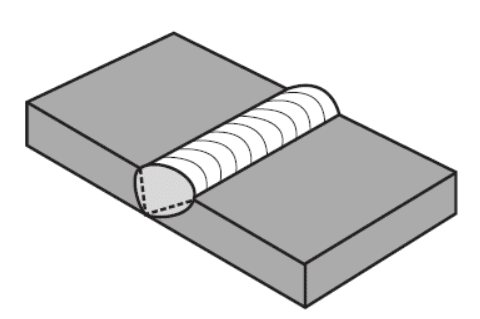
Butt joints are commonly used in various industries, including construction, automotive, and manufacturing, where strong and continuous connections are required. They are versatile and can be found in applications such as structural beams, pipelines, and sheet metal fabrication.
There are Four main types of butt welds:
- Square butt weld: without any weld bevel on joining member
- Bevel butt Joint: Bevel on one joining member, either single side or both side of the joining member.
- Groove Weld butt Joint: Bevel prepared on both joining member. Different types of groove weld as single side V-Groove, Double side V-Groove, J groove, U groove weld, etc.
- Flare Butt Joint: Special type of groove weld, where one or both members are round in shape.
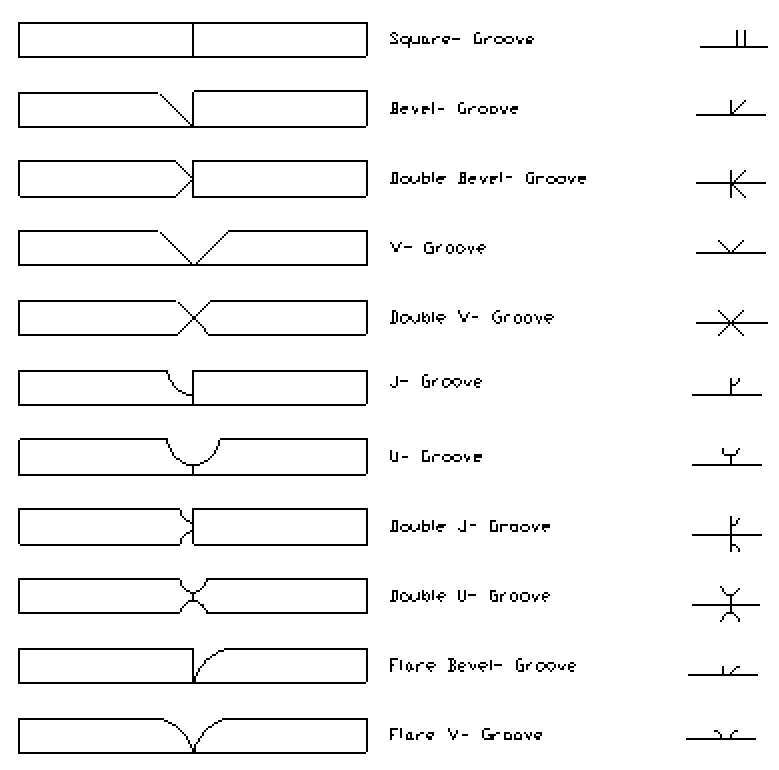
- What is Square Groove Weld Joint, Weld Symbol with Examples
- What is a Groove Weld and its different types with Symbols
Lap joint
A lap joint is a type of welded joint in which two pieces of metal are lapped together and then welded. The overlapping edges of the two pieces are usually welded using a Fillet Weld. Lap joints are usually made on small thickness to increase strength of weld joint.
To create a lap joint, the two metal pieces are placed on top of each other, with one piece overlapping the other. The overlapping portion is then welded to join the two pieces together. The weld can be made on one or both sides of the joint, depending on the specific requirements of the application.
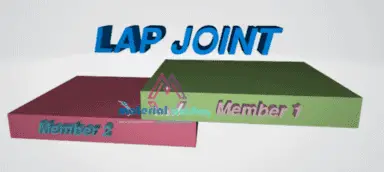
Lap joints are often used when joining thin sheets of metal or when the strength of the joint is not critical. They are relatively easy to create and provide good alignment and stability. However, lap joints may not be suitable for applications where high strength or load-bearing capacity is required, as they are not as strong as some other types of joints, such as butt joints or T-joints.
Lap joints are used in a variety of applications, including electrical junction boxes, automotive panels, and aircraft components. They offer several advantages over other types of welds, such as improved strength and ease in making.
T-joint
T-joints are one of the most commonly used welds in industry. They are made by joining two pieces of metal at a 90 degree angle. Fillet weld is the most common example of a T-Joint. Although, T-Joint can be made using groove weld.
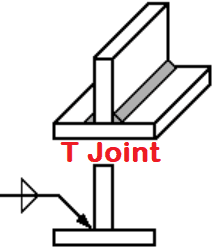
T-joints can be used to join both thick and thin pieces of metal, and are often used in the construction of buildings and bridges. T-Joint will groove are used to make full penetration T-Joints, also called HV welds for high loading applications where a butt weld is not feasible.
A summary of T-Joint are:
- A T joint is a type of joint used in welding where two pieces of metal are joined together at a right angle, forming a T shape.
- It is commonly used in structural applications, such as building frames, bridges, and machinery.
- The T joint is created by placing one piece of metal perpendicular to another, forming a 90-degree angle.
- The joint is then welded along the intersection of the two pieces to create a strong and durable connection.
- Proper preparation is essential for a successful T joint weld, including cleaning the metal surfaces, removing any contaminants, and ensuring proper fit-up.
Fillet weld
A fillet weld is a type of welding joint in which two pieces of metal are joined together at an angle of 90 degrees. The strength of a fillet weld is determined by its size (throat thickness) and the part thickness of metal being joined. The size of the fillet (the length of each side of the triangle) will determine the strength of the weld.
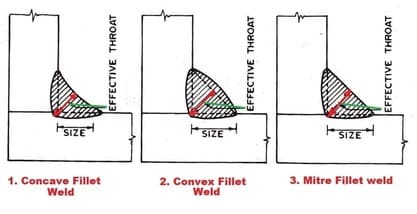
Types of Fillet Weld
Fillet welds are the most common type of weld used in both construction and manufacturing, but there are actually three different types of fillet welds are:
- Convex Fillet,
- Concave Fillet, and
- Metre Fillet.
A convex fillet weld is created when the weld bead has a rounded or protruding profile. This type of weld is typically used when aesthetic appeal is important, as it creates a smooth, finished look.
Concave fillet welds are the opposite of convex; they have an indented or depressed profile. These types of welds are often used in structural applications where strength is key, especially fatigue loading. Metre fillet weld has flat surface finish and usually achieved by grinding. Metre fillet welds are not common in use.
Corner joint
A corner joint is created when two pieces of metal are joined at a 90 degree angle. This type of joint is often used for framing or in construction. A welder will use a welding symbol to indicate which side of the joint should be welded first.
The main types of Corner Joints are:
- Open Corner Joint.
- Half Open Corner Joint.
- Closed Corner Joint.
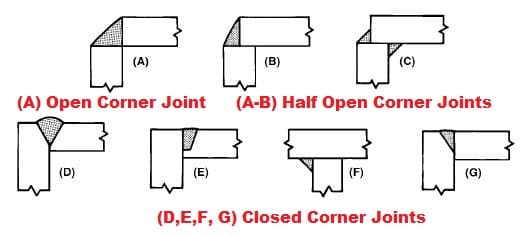
A corner joint in welding refers to the junction where two pieces of metal meet at a 90-degree angle, forming a corner. It is one of the most common types of joints used in welding.
Read more: Corner Joint Welding- The Basics You Need to Know
Edge joint
Edge joints are created when two pieces of metal are placed side-by-side and welded together. The weld is between the edges of 2 or more parallel or nearly parallel plates.
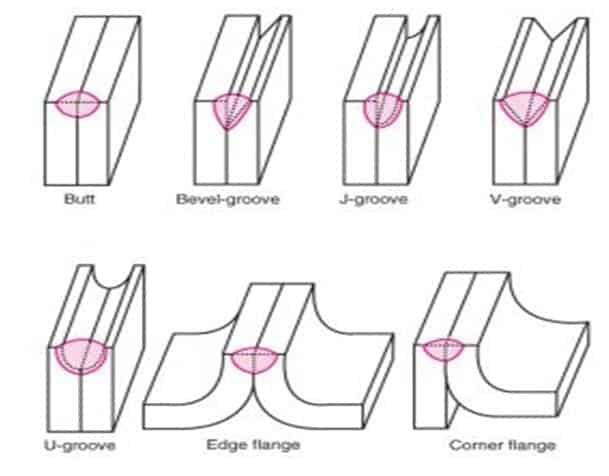
Edge joints are typically used when joining sheet metal or thin plates. When two thick plates are to be joined, an edge joint is not recommended as it would not provide sufficient strength. In these cases, a butt joint would be a better option.
Edge welded joints specifically involve welding the edges of two metal pieces together. The edges are prepared by cleaning, beveling, and clamping the pieces together before welding. The quality of edge welded joints depends on proper edge preparation, alignment of the pieces, and the welding technique used.
Slot weld
A slot weld is a type of groove joint that is made by welding along the edges of a slot that has been cut into one of the pieces to be joined. The other piece is without any cut. The two pieces are brought together to overlap each other to form a pocket via the cut slot that is filled with welding.
Slot weld is similar to plug weld but in slot welds the cut is elongated instead of round hole as shown in below picture.
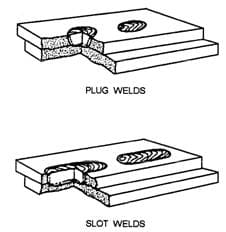
To make a slot weld, the welder first uses a torch or plasma cutter to cut a elongated groove or slot into one of the pieces to be joined. This slot is filled with welding to form a slot weld.
Plug Weld
A plug weld is a type of slot weld but having round hole instead of elongated slot hole, which is defined as a weld made between two overlapping metal surfaces. Plug welds are often used to attach patch plate to add thickness to existing plate. In a plug weld, the hole is filled completely for full depth and hence plug welds are not a fillet weld.
There are several benefits to using plug welds. They create a stronger joint than other types of spot welds, and they can be used on thicker materials. Additionally, plug welds can be made quickly and easily with automated welding equipment.
Flare Groove Weld
Flare groove welds are widely used in the construction industry because they offer high strength and durability. A flare bevel Groove Weld is a type of weld where a groove is formed between a joint member with a curved surface and another with a planar surface.
The main types of Flare weld are:
- Flare Bevel Weld; Single Flare & Double Flare
- Flare V-Groove Weld; Single Flare-V and Double Flare-V
So, for a flare bevel groove to take place, one joining member needs to be a tubular shape. For example, a weld formed between a pipe and plate placed horizontally to each other as shown in the below figure.
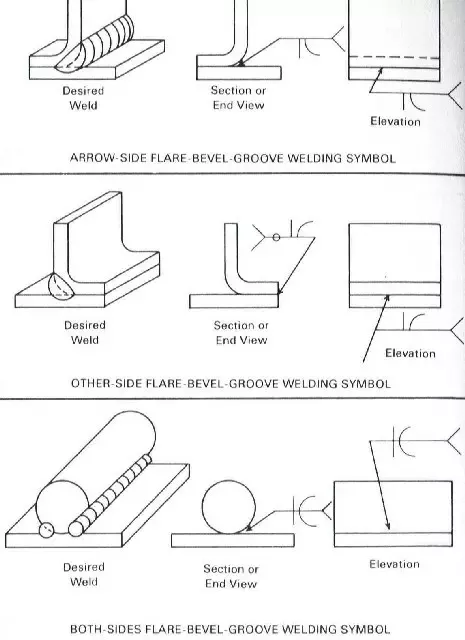
Read More: How to measure a Flare V groove weld?
Spot weld
A spot weld is a type of weld that joins two pieces of overlapping metal together by fusing them at localized points at faying surfaces. Spot welding is mainly used for sheet metal welding applications.
Spot welding is commonly used in the automotive industry to join panels and other components together. The process is relatively quick and easy, and it results in a strong bond between the two pieces of metal.
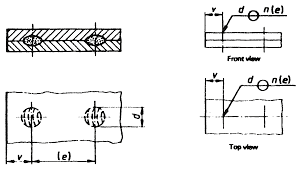
To create a spot weld, an electrode is placed on each side of the two pieces of metal to be joined. An electric current is then passed through the electrodes, which heats the metal and causes it to fuse together at the point of contact in a circular weld cross section. The resulting joint is typically very strong and can withstand a lot of force.
Spot welding is an efficient way to join two pieces of metal together, and it results in a strong bond that can withstand a lot of force.
Surfacing Weld
Surfacing welds are used to build up metal that has been worn down or damaged. A surfacing weld is done by depositing a layer of welding material on the surface of the metal.
Surfacing weld, also known as weld overlay or weld buildup (WBU), is a welding process that deposits weld metal on the surface of a base metal. It is used to:
- Repair worn or damaged parts by building up material on the surface. This can restore the part to its original dimensions.
- Increase wear resistance by depositing a harder material on the surface. Materials like hardfacing alloys can be used.
- Seal leaks by depositing weld metal to fill gaps and holes.
The process involves melting filler material using a welding process like gas metal arc welding (GMAW) or shielded metal arc welding (SMAW) and depositing it on the surface of the base metal. The filler material builds up and forms a layer over the base metal.
Common applications of weld overlay include repairing or rebuilding:
• Worn shafts • Damaged pump parts • Cracked molds and dies • Eroded chutes and liners
The weld overlay provides a hard, wear resistant surface that can prolong the life of the part and reduce downtime for replacement or repair.
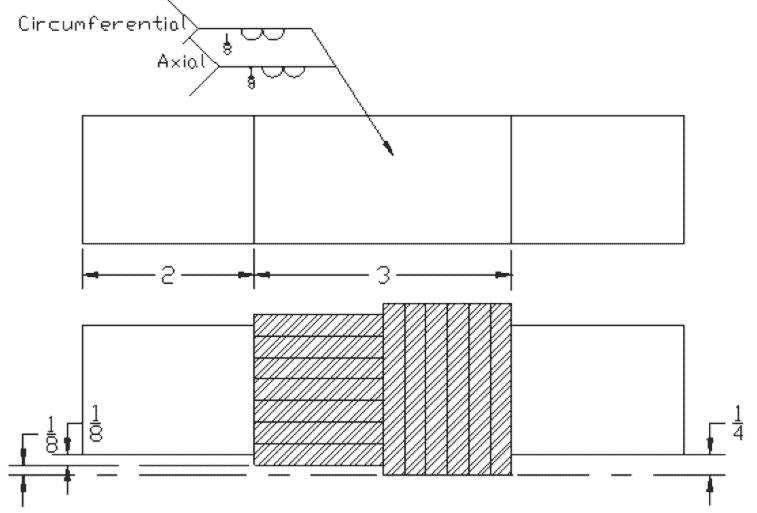
This type of weld is also used to add strength to a metal that is not strong enough on its own. Surfacing welds can be done with any type of welding process, but they are most commonly done with arc welding processes.Surfacing weld is also called Weld buttering or Weld Build up (WBU) in industries.
Projection Welds
A projection weld is a type of spot weld that is made by projecting or embossing a raised metal area onto the work piece under heavy pressure. The embossed area is then melted and the two pieces of metal are joined together. Projection welding is often used to join thin sheets of metal together, such as in the automotive industry.
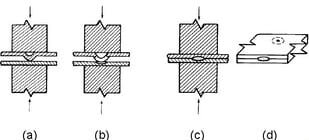
The advantage of projection welding over other types of spot welding is that it can be used to weld large areas quickly and efficiently. Additionally, projection welding can be used to create strong welds that are less likely to leak or break.
There are several things to keep in mind when projection welding, such as the size and shape of the projections, the amount of current, and the speed at which the electrode moves. By following these guidelines, it is possible to create strong, high-quality welds.
Seam Weld
A seam weld is a type of welding that joins two pieces of metal together by fusing them along their seam by overlapping each other. Seam welding is often used in the automotive industry to join together panels of sheet metal. The advantage of using a seam weld is that seam weld is faster and does not require any filler wire.
Seam welding is a joining technique used to bond metal components together along an adjacent edge or “seam.” During the seam welding process, heat is applied to the edges of two metal parts to melt and fuse the metals together, forming a strong weld. Some common types of seam welding include:
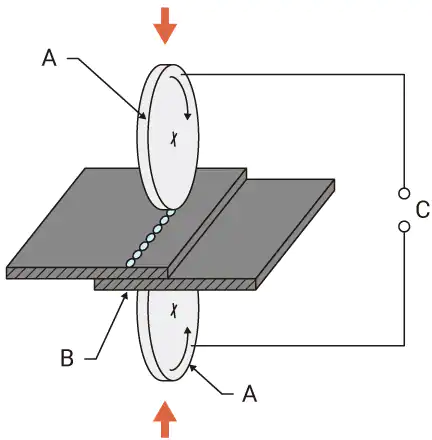
- Resistance seam welding: Electric current is passed through the metal parts to generate heat and melt the seam. This is a common technique for welding sheet metal components.
- Friction seam welding: High rotational speeds and pressure are used to generate heat and weld the seam through friction. This technique is often used for tubular metal parts.
- Laser seam welding: A high-power laser is focused on the seam to melt and fuse the metal parts. This allows for precision welding of thin metal sheets.
- Electron beam welding: An electron beam is concentrated on the seam to melt the metal and create a weld. This technique allows for welding of dissimilar metals.
The purpose of seam welding is to securely join metal components along a continuous seam or edge, creating a strong, leak-proof joint. It is commonly used in automotive, appliance, and structural fabrication applications.
Stud Weld
A stud weld is a type of welding where a metal rod, or stud, is joined to another piece of metal. The stud is first attached to a stud welding gun. Then, an arc is created between the gun with stud and base metal, which melts the stud end and metals to join them together.
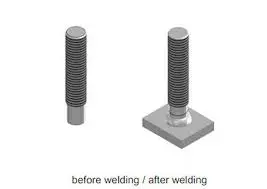
Stud welding is often used in construction and manufacturing, as it can create strong joints between two pieces of metal quickly and easily. This type of welding is also relatively simple to do, which makes it a good choice for many projects.
There are two main types of stud welds: arc welds and resistance welds. Arc welds are created using an electric arc, while resistance welds use heat to melt the metals together. Both types of welds can be completed using either automatic or manual equipment.
Upset Weld
Upset weld is a type of weld that is created using resistance welding process. The pressure and resistance is applied between two abutting surfaces to create heat and produce a welding joint. Upset welds are strong and can be used on thick materials but requires two material having flat surface.
